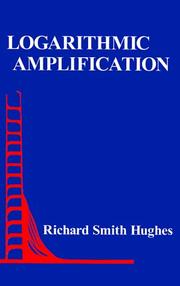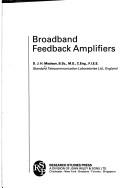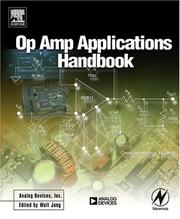| Listing 1 - 10 of 1598 | << page >> |
Sort by
|

ISBN: 0890061823 9780890061824 Year: 1986 Publisher: Dedham (Mass.): Artech House,
Abstract | Keywords | Export | Availability | Bookmark
 Loading...
Loading...Choose an application
- Reference Manager
- EndNote
- RefWorks (Direct export to RefWorks)
Book
ISBN: 0738143618 Year: 1976 Publisher: [Place of publication not identified] : IEEE,
Abstract | Keywords | Export | Availability | Bookmark
 Loading...
Loading...Choose an application
- Reference Manager
- EndNote
- RefWorks (Direct export to RefWorks)
This standard provides standard test procedures for amplifiers and preamplifiers for semiconductor detectors for ionizing radiation. It supersedes the previous edition, IEEE Std 301-1969 (ANSI N42.2-1969). The standard has been modified and refined based on the experience gained in using the earlier edition over a six-year period and taking into account advances in the technology. Improvements in preamplifier noise characteristics and pulse shaping techniques as well as increased utilization of integral detector-preamplifier assemblies have occurred in recent years.
Book
ISBN: 0738106755 Year: 1989 Publisher: New York : IEEE,
Abstract | Keywords | Export | Availability | Bookmark
 Loading...
Loading...Choose an application
- Reference Manager
- EndNote
- RefWorks (Direct export to RefWorks)
This standard describes test procedures for amplifiers and preamplifiers that are used with semiconductor, scintillation, and proportional detectors in the spectrometry of ionizing radiation. It supersedes ANSI/IEEE Std 301-1976, IEEE Standard Test Procedures for Amplifiers and Preamplifiers for Semiconductor Radiation detectors for Ionizing Radiation. The title was changed because the same amplifiers used for semiconductor detectors are applicable to other types. In this standard, measuring procedures are given in greater detail because with modern amplifiers, perceived performance often depends on the details of measurement. Tests that are specific to amplifiers with time-variant pulse-shaping filters are not included, nor are tests for pile-up rejectors. Time-variant filters allow shorter pulse-shaping times than linear filters for the same signal-to-noise ratio, and pile-up rejectors block pulses that overlap earlier ones, allowing higher count rates for a given spectral-line resolution. Both techniques have the greatest application at very low energies because wide pulses must be used to optimize the SNR, and at high energies where detector artifacts cause low-side tailing of spectrum lines. The pulse width at 50% of peak amplitude is the main amplifier indicator of shaping time because this parameter best allows a performance comparison among different amplifiers. Compared with other parameters, this one is the easiest to measure accurately with an oscilloscope and pulse generator.
Book
ISBN: 1630814679 9781630814670 9781608079872 1608079872 Year: 2017 Publisher: Boston ; London : [Piscataqay, New Jersey] : Artech House, IEEE Xplore,
Abstract | Keywords | Export | Availability | Bookmark
 Loading...
Loading...Choose an application
- Reference Manager
- EndNote
- RefWorks (Direct export to RefWorks)
Includes practical and cutting-edge insight, this book presents a complete and systematic overview of the practical design considerations of radio frequency (RF) high efficiency load modulation power amplifiers (PA) for modern wireless communications for 4G and beyond. --
Book
ISBN: 1608077853 9781608077854 9781608077847 1608077845 Year: 2014 Publisher: Norwood : [Piscataqay, New Jersey] : Artech House, IEEE Xplore,
Abstract | Keywords | Export | Availability | Bookmark
 Loading...
Loading...Choose an application
- Reference Manager
- EndNote
- RefWorks (Direct export to RefWorks)
Envelope tracking technology is seen as the most promising efficiency enhancement technology for RF power amplifiers for 4G and beyond wireless communications. More and more organizations are investing and researching on this topic with huge potential in academic and commercial areas. This is the first book on the market to offer complete introduction, theory, and design considerations on envelope tracking for wireless communications. This resource presents you with a full introduction to the subject and covers underlying theory and practical design considerations.

ISBN: 0471102148 9780471102144 Year: 1982 Publisher: Chichester: Wiley,
Abstract | Keywords | Export | Availability | Bookmark
 Loading...
Loading...Choose an application
- Reference Manager
- EndNote
- RefWorks (Direct export to RefWorks)

ISBN: 9780750678445 0750678445 9780080491998 0080491995 1592783538 9781592783533 1281020176 9781417552727 9786611020170 9781281020178 Year: 2005 Publisher: Burlington, MA : Newnes,
Abstract | Keywords | Export | Availability | Bookmark
 Loading...
Loading...Choose an application
- Reference Manager
- EndNote
- RefWorks (Direct export to RefWorks)
Operational amplifiers play a vital role in modern electronics design. The latest op amps have powerful new features, making them more suitable for use in many products requiring weak signal amplification, such as medical devices, communications technology, optical networks, and sensor interfacing. The Op Amp Applications Handbook may well be the ultimate op amp reference book available. This book is brimming with up-to-date application circuits, valuable design tips, and in-depth coverage of the latest techniques to simplify op amp circuit designs, and improve their performance. As an
Book
ISBN: 1107224500 1139152599 1283342227 9786613342225 1139160028 1139161024 1139155466 1139157213 1139015346 Year: 2012 Publisher: Cambridge : Cambridge University Press,
Abstract | Keywords | Export | Availability | Bookmark
 Loading...
Loading...Choose an application
- Reference Manager
- EndNote
- RefWorks (Direct export to RefWorks)
Whether you are an RF transistor designer, an amplifier designer or a system designer, this is your one-stop guide to RF and microwave transistor power amplifiers. A team of expert authors brings you up to speed on every topic, including: devices (Si LDMOS and VDMOS, GaAs FETs, GaN HEMTs), circuit and amplifier design (discrete, hybrid and monolithic), CAD, thermal design, reliability, and system applications/requirements for RF and microwave transistor amplifiers. Covering state-of-the-art developments and emphasising practical communications applications, this is the complete professional reference on the subject.
Power amplifiers --- Amplifiers, Radio frequency --- Microwave amplifiers
Book
ISBN: 3521061272 9783521061279 Year: 1980 Volume: 84 Publisher: Muenchen: Thiemig,
Abstract | Keywords | Export | Availability | Bookmark
 Loading...
Loading...Choose an application
- Reference Manager
- EndNote
- RefWorks (Direct export to RefWorks)
Book
ISBN: 0128098759 0128098678 9780128098752 9780128098677 Year: 2018 Publisher: Cambridge, MA : Elsevier,
Abstract | Keywords | Export | Availability | Bookmark
 Loading...
Loading...Choose an application
- Reference Manager
- EndNote
- RefWorks (Direct export to RefWorks)
Doherty Power Amplifiers: From Fundamentals to Advanced Design Methods is a great resource for both RF and microwave engineers and graduate students who want to understand and implement the technology into future base station and mobile handset systems. The book introduces the very basic operational principles of the Doherty Amplifier and its non-ideal behaviors. The different transconductance requirements for carrier and peaking amplifiers, reactive element effect, and knee voltage effect are described. In addition, several methods to correct imperfections are introduced, such as uneven input drive, gate bias adaptation, dual input drive and the offset line technique. Advanced design methods of Doherty Amplifiers are also explained, including multistage/multiway Doherty power amplifiers which can enhance the efficiency of the amplification of a highly-modulated signal. Other covered topics include signal tracking operation which increases the dynamic range, highly efficient saturated amplifiers, and broadband amplifiers, amongst other comprehensive, related topics. Specifically written on the Doherty Power Amplifier by the world’s leading expert, providing an in-depth presentation of principles and design techniques Includes detailed analysis on correcting non-ideal behaviors of Doherty Power Amplifiers Presents advanced Doherty Power Amplifier architectures
Power amplifiers. --- Amplifiers, Radio frequency. --- Radio frequency amplifiers --- Amplifiers (Electronics)
| Listing 1 - 10 of 1598 | << page >> |
Sort by
|

 Search
Search Feedback
Feedback About UniCat
About UniCat  Help
Help News
News